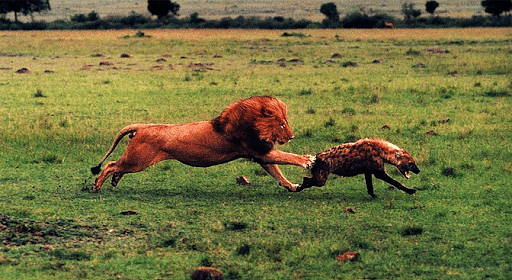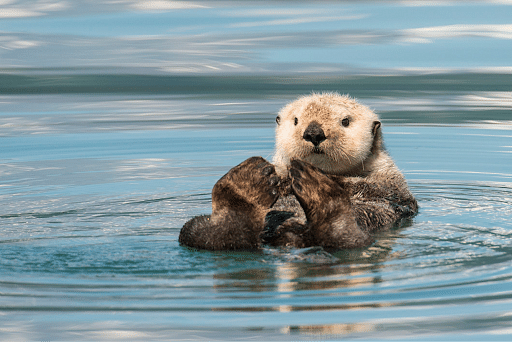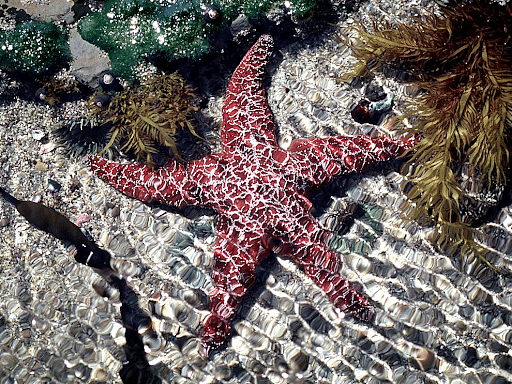Collegedunia Team Content Curator
Content Curator
Keystone Species are the species that have a great importance in an ecosystem. These species affect the plants and animals that live in their ecosystem. The abundance of keystone species can help many other species in their survival. In this article, we will discuss more about the Keystone species, their types and importance.
| Table of Content |
Keyterms: Keystone, Ecosystem, Plants, animals, Habitat, Species, Environment, Plants, Animals, Keystone species, Herbivorous animals
Keystone Species
[Click Here for Sample Questions]
Keystone species are those species that have a disproportionately large influence on a given environment in comparison to their population size. Keystone species are also important for the general form and composition of an ecosystem, since they affect the plants and animals that inhabit there. As a result, many ecosystems would cease to function in the absence of a keystone species. The predator-prey interaction is a common example of a keystone species.

Keystone species
Small predators that eat herbivorous animals keep such herbivores away from depleting plant species in the ecosystem and are regarded as keystone species. In this scenario, if this keystone species did not exist, the herbivore population would continue to increase and therefore devour all of the dominant plant species in the ecosystem.
For Example: A single mountain lion may cover hundreds of kilometres of Canadian woodland. The existence of the mountain lion influences the deer, rabbits, and bird species in the environment. The eating habits of these species, as well as where they choose to build their nests and burrows, are primarily influenced by mountain lion activities.

Keystone species
Importance of Keystone Species
[Click Here for Previous Year Questions]
A keystone species is a plant or animal that performs a different but important role in the functioning of an ecosystem. Without keystone species, the ecosystem would be drastically altered or might cease to exist entirely. A small number of keystone species can have a significant environmental influence. Some of the important impacts are as follows:
- Organisms' physical structures can be transformed.
- Parasites, diseases, and predators can all have an impact on prey and host populations.
- Providing necessary services and resources, as well as acting as mutualists.
- As producers and consumers, we are influencing the flow of energy in the environment and becoming material resources.
- The extinction of a keystone species would set off a domino effect.
- Without the presence of a predator, the number of deer or rabbits may increase and the environment may not be available to support an infinite number of animals.
Do check out:
| Important Topics | ||
|---|---|---|
| Mutation | Ganga action plan | Endangered Species |
| Montreal Protocol | Environment Protection Act 1986 | Homeostasis |
Types of Keystone Species
[Click Here for Sample Questions]
Some examples of keystone species are given below to grasp the significance of keystone species:
1. Sea Otter-
The sea otter is a keystone species because it consumes sea urchins and prevents the degradation of kelp forests caused by the sea urchin population. Many species in nearshore habitats rely on kelp forests for survival.
Sea urchins graze on nearshore kelp forests in the absence of sea otters, damaging these nearshore ecosystems. However, when sea otters are present, their eating of sea urchins limits the population of sea urchins to smaller creatures restricted to protected crevices. Thus, the sea otter preserves the kelp forests by decreasing the number of local sea urchins.

Sea Otter
2. Large Mammalian Predators-
While tiny predators are essential keystone species in many ecosystems, Large mammalian predators are also considered keystone species in larger ecosystems. Keystone species include the lion, jaguar and grey wolf, which help balance vast ecosystems (e.g., Central and South American rainforests) by eating a diverse range of prey species.

Large mammalian predators
3. Sea Star-
Sea stars are another well-known keystone species because they devour mussels in places where there are no natural predators. When a sea star is removed from an environment, the population of mussels proliferates uncontrolled and reduces the resources available to other species in the ecosystem.

Sea Star
4. Herbivores-
Keystone species can also be herbivores. Their eating of plants aids in the regulation of an ecosystem's physical and biological characteristics. Elephants are a keystone species in African savannas such as Tanzania's Serengeti plains. Elephants feed on savanna plants and small trees like acacia. Even if an acacia tree develops to a metre or more in height, elephants can knock it over and uproot it.

Herbivores
The savanna remains a grassland rather than a forest or woodland because of this grazing activity. With elephants controlling the tree population, grasslands grow and provide food for grazing species like antelopes, wildebeests, and zebras. Smaller creatures, such as mice and shrews can dig in the savanna's warm and dry soil. Predators like lions and hyenas rely on the savanna for food.
Keystone Species of Different Ecosystem
[Click Here for Previous Year Questions]
Here are some of the keystone species of different ecosystem:
Ocean
Sharks are keystone predators at the top of the food chain and have an influence on marine ecosystems all around the world. They regulate disease transmission and prey populations by preying on the sickest, weakest, and slowest animals. They also have an influence on local habitat: for example, by killing predatory fish like grouper in Caribbean reef ecosystems.
Sharks allow populations of herbivorous fish further down the food chain to survive, and these fishes feed on algae that would otherwise damage coral reefs.
Desert
The saguaro cactus, which is native to the Sonoran Desert of the southwestern United States and northern Mexico is a keystone species that offers vital breeding sites for birds such as red-tailed hawks and woodpeckers.
These cacti are also a significant source of food. Their blossoming blooms provide food for bats, birds, and bees, and their fruit is sometimes the only wet food supply for a wide variety of animals, insects, and other species.
Tundra
The Arctic tundra, which is cold, treeless, and often snowy, spans the northern section of the Northern Hemisphere and is an environment in which few plant and animal species flourish.
The lemming, a tiny rodent with a huge and cyclical population, is one of its most important prey species. Lemmings are a keystone species that feed predators such as arctic foxes, snowy owls, and weasels. As herbivores, they also influence the prevalence, health, and composition of the plants on which they eat.
Tropical Rainforest
Fig trees are an important resource in tropical forests across the world. It provides fruits that nourish over 1,200 different varieties of birds, bats, and other animals all year. Some keystone species are seed dispersers. Seed dispersers are the animals that travel through the forest, leaving droppings full of seeds that can subsequently take root and flourish.
Boreal Forest
The boreal forest, also known as taiga, forms a ring around the bulk of the world's northern latitudes. The snowshoe hare is an example of a keystone prey species in the Canadian boreal, providing food for the vulnerable Canada lynx and other predators.
Keystone species in the boreal include trees such as aspen and willow, which provide a critical food supply for animals ranging from bees to bears. These trees offer essential habitat for a variety of creatures such as lichens, fungi, insects, and birds.
Do check out:
Things to Remember
- Keystone species are those that have a disproportionately large influence on a given environment in comparison to their population size.
- A few predators can have significant control over the range and population of a vast number of prey species.
- Without the keystone species, new plants and animals may invade the environment and drive out the native species.
- The sea otter is a keystone species because it consumes sea urchins and prevents the degradation of kelp forests.
- Tiny predators are essential keystone species in many ecosystems whereas the large mammalian predators are also considered keystone species in larger ecosystems.
- Keystone species can also be herbivores. They regulate an ecosystem's physical and biological characteristics by eating plants.
Previous Year Questions
- According to IUCN Red list, what is the status of Red Panda (Ailurus fulgens) ?….[NEET 2015]
- Which one of the following have the highest number of species in nature ?..[NEET 2011]
- Which one of the following has maximum genetic diversity in India ?...[NEET 2009]
- Which of the following regions of the globe exhibits highest species diversity ?..[NEET 2020]
- Which of the following National Parks is home to the famous musk deer or hangul ?[NEET 2016]
- Choose the right one which denotes genetic diversity....[KCET 2013]
- With respect to Eichorrnia: Statement X : It drains off Oxygen from water and is seen growing in standing water. Statement Y : It is an indigenous species of our country...[KCET 2015]
- The historic convention related to conservation of biological diversity is also known as…..[KCET 2019]
- Which of the following animals is protected in Kaziranga Sanctuary in Assam..[KCET 2004]
- One of the chief reasons among the following for the depletion in the number of species making it endangered is _________[KCET 2014]
- The world biodiversity day is celebrated annually on...[KCET 2006]
- Hotspots of biodiversity means..[DUET 2010]
- How many bio-geographical regions are present in India?..[DUET 2011]
- IUCN stands for...[DUET 2010]
- Kaziranga National Park is famous for
Sample Questions
Ques: Which is the most significant keystone species? (2 Marks)
Ans: Bees are the most important species in the world as they offer food and habitat to a vast array of creatures. Bees are great examples of keystone species because they support ecosystem sustainability by cross-pollinating many diverse plant types.
Ques: Is the human species a keystone species? (2 Marks)
Ans: Ecologists have discovered a number of keystone species, which are creatures with disproportionate ecological impacts in comparison to their biomass. Humans are identified as a higher-order or 'hyperkeystone' species that drives complex interaction chains by influencing other keystone agents across many habitats.
Ques: How can we save the keystone species? (2 Marks)
Ans: We can save keystone species in various ways. We can avoid using hazardous chemicals like herbicides, pesticides, and insecticides in your home gardens and try utilising natural alternatives. We can also plant native plants. Many native bee species are decreasing as a result of malnutrition.
Ques: What characteristics distinguish a keystone species? (2 Marks)
Ans: One of the distinguishing features of a keystone species is that it performs a crucial ecological function that no other species can. Without its keystone species, an entire ecosystem would alter dramatically or perhaps cease to exist.
Ques: What is the primary distinction between a foundation and a keystone species? (2 Marks)
Ans: When compared to its abundance, a keystone species has a disproportionate influence on its environment. A foundation species is often a primary producer with a high abundance and influence in an ecosystem.
Ques: How can grizzly bears function as keystone species? (2 Marks)
Ans: Grizzly bears, being a keystone species, have a great impact on the ecosystems in which they live. They maintain healthy populations of the animals they feed on, like elk and moose. It also maintains the health of forests by spreading seeds and berries through their excrement.
Ques: What is the difference between keystone and alien species? (2 Marks)
Ans: Keystone species help to preserve biodiversity. Their extinction can have a significant impact on community dynamics.
Alien species or invasive species are non-native creatures brought into an area that may be better competitors and reproduce quicker than native species. They have the potential to disrupt the ecological equilibrium.
Ques: When was the keystone species theory proposed? And how? (3 Marks)
Ans: The dominance of top-predator starfish in intertidal ecosystems originally suggested and validated the notion of keystone species in the 1960s. Keystone species are those that have an outsized impact on the prevalence and population levels of other species in their environment or community. The return of the grey wolf from extinction in Yellowstone National Park over ninety years ago illustrates the importance of keystone species to the long-term health of the ecosystems they inhabit. Most significantly, keystone species preservation and restoration are critical for preserving or re-establishing the historic structure and function of the ecosystem they live in.
Ques: What is the significance of keystone species in Conservation? (3 Marks)
Ans: Keystone species can play a critical role in the conservation of entire ecosystems and species. According to Robert Paine, "it (keystone species) convinced managers and environmentalists alike that the ecological effect of one species is important." In order to manage, comprehend, and repair biological assemblages, the contributions of individual species must be comprehended and taken into account. Conservationists can assure the protection of all associated species by identifying the keystone species of a given ecosystem that must be protected. As a result, they can ensure that the entire ecosystem, rather than just the species, is protected and restored.
Ques: How does keystone species sustain life in India’s Tiger Reserve? (3 Marks)
Ans: Cullenia is an endemic plant, which means it grows natively nowhere else on the planet. It is protected in Kalakad Mundanthurai Tiger Reserve, an important biosphere reserve in the Agasthyamalai Hills of southern India's Western Ghats. This area is a haven for critically endangered monkeys, civets, bats, and a variety of birds, butterflies, amphibians, and reptiles. The 360-square-mile (900-square-kilometer) reserve is under threat from increasing land-use pressures such as tea and coffee plantations created by the British, rice paddies in the lowlands, and rising poaching incidents.
For Latest Updates on Upcoming Board Exams, Click Here:https://t.me/class_10_12_board_updates
Do Check Out:




Comments